-
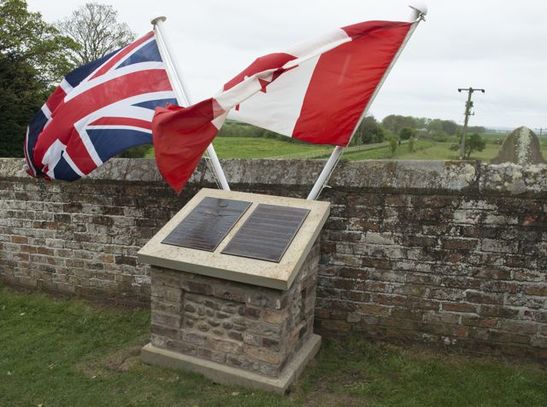
Halifax Bomber NA612 Memorial - Taken by Helperby & Brafferton War Memorial Committee 12 May 2013
-
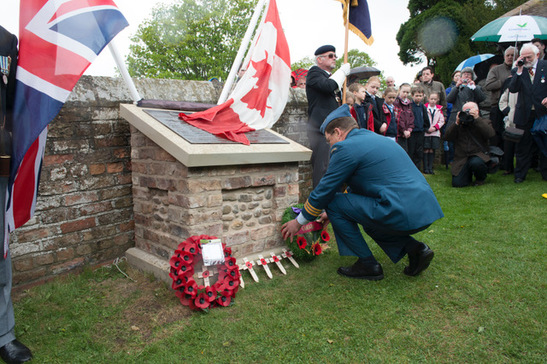
Unveiling of Halifax Bomber NA612 Memorial - Taken by Helperby & Brafferton War Memorial Committee 12 May 2013
-
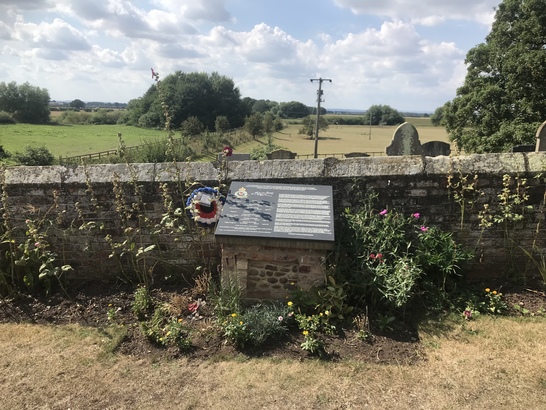
Replacement crash memorial memorial Helperby - Taken by C Chapman 27 Aug 2022
-
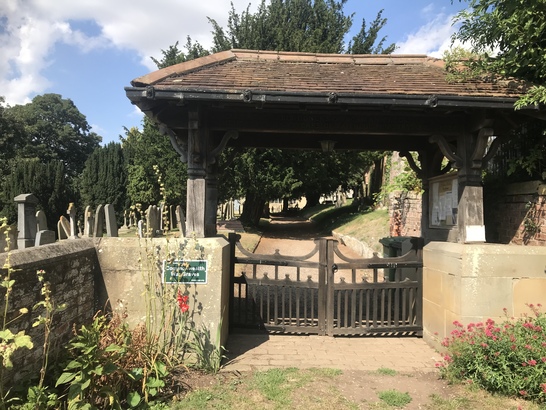
Church gate and CWGC sign next to the crash memorial - Taken by C Chapman 27 Aug 2022
-
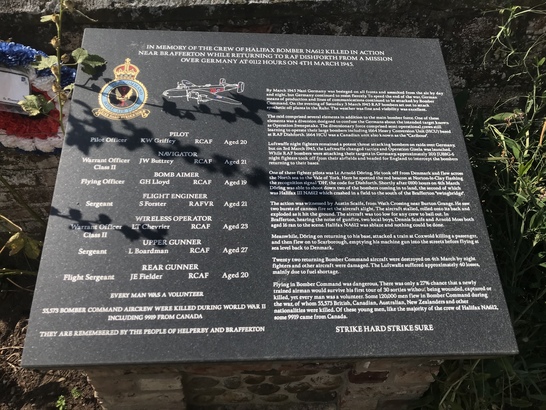
New plaque on memorial - Taken by C Chapman 27 Aug 2022
-
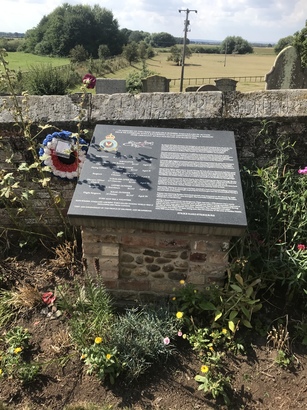
View over memorial to crash site near river - Taken by C Chapman 27 Aug 2022
Reference WMO/227054
War Memorials Trust case: War Memorials Trust needs to avoid Contributors changing location/description details as we help to protect and conserve this war memorial through our casework. You can still add photographs, update condition and use the tabs below. If you believe any of the information you cannot edit is wrong or information is missing, please make a note of the reference number and include it in your email when you contact us.
- Brick Brick
- Other Other
- Rock/Rough Stone Rock/Rough Stone
- Stone Sandstone
- Second World War (1939-1945)
Grants to support the repair and conservation of war memorials are available from the charity War Memorials Trust if it has raised funds. Support is focused on war memorials in Very bad or Poor condition or where there is a serious Concern.
Before applying for a grant you should read the advice available on War Memorials Trust`s website. The What we can and cannot fund helpsheet explains what types of work the charity can fund.
If you believe your project is eligible for a grant you should complete the Pre-application enquiry form. You will need to be registered and logged in to complete this.
The Pre-application enquiry form is a series of questions to see if your project is eligible. If it is, you will need to provide further details and submit current colour photographs of the war memorial in either a png, gif, jpg or jpeg format.
You can save your Pre-application enquiry form as you go along. Once submitted War Memorials Trust will respond.
Please be aware that a summary of your enquiry, without your contact details, will appear on this page once submitted. This ensures others are aware that an enquiry has been made and can read the response to avoid duplicate enquiries. Information provided by you to us will be used for the purpose of managing the grant enquiry, for further details please read our Terms and Conditions and Privacy Policy .
As a charity, War Memorials Trust relies on voluntary donations and every contribution, no matter how large or small, makes a really big difference to our work. Your donation will help protect and conserve war memorials for future generations so please support War Memorials Trust’s work.
First Plaque inscription is as follows: IN MEMORY OF THE CREW OF HALIFAX BOMBER NA612 KILLED IN ACTION NEAR BRAFFERTON WHILE RETURNING TO RAF DISHFORTH FROM A MISSION OVER GERMANY AT 0112 HOURS ON 4th MARCH 1945. PILOT Pilot Officer KW Griffey RCAF Aged 20 NAVIGATOR Warrant Officer Class II JW Buttrey RCAF Aged 21 BOMB AIMER Flying Officer GH Lloyd RCAF Aged 19 FLIGHT ENGINEER Sergeant S Forster RAFVR Aged 21 WIRELESS OPERATOR Warrant Officer Class II LT Chevrier RCAF Aged 23 UPPER GUNNER Sergeant L Boardman RCAF Aged 27 REAR GUNNER Flight Sergeant JE Fielder RCAF Aged 20 EVERY MAN WAS A VOLUNTEER 55,573 BOMBER COMMAND AIRCREW WERE KILLED DURING WORLD WAR II INCLUDING 9919 FROM CANADA THEY ARE REMEMBERED BY THE PEOPLE OF HELPERBY AND BRAFFERTON Second Plaque Inscription reads as follows: THE EVENTS OF 3rd/4th MARCH 1945 By March 1945 Nazi Germany was besieged on all fronts and assaulted from the air by day and night, but Germany continued to resist fiercely. To speed the end of the war, German means of production and lines of communications continued to be attacked by Bomber Command. On the evening of Saturday 3 March 1945 RAF bombers set out to attack synthetic oil plants in the Ruhr. The weather was fine and visibility was excellent. The raid comprised several elements in addition to the main bomber force. One of these elements was a diversion designed to confuse the Germans about the intended target known as Operation Sweepstake. The diversionary force comprised semi operational crews still learning to operate their large bombers including 1664 Heavy Conversion Unit (HCU) based at RAF Dishforth. 1664 HCU was a Canadian unit also known as the “Caribous”. Luftwaffe night fighters remained a potent threat attacking bombers on raids over Germany, but on 3rd March 1945, the Luftwaffe changed tactics and Operation Gisela was launched. While RAF bombers were attacking their targets in Germany, approximately 200 JU88G-6 night fighters took off from their airfields and headed for England to intercept the bombers returning to their bases. One of these fighter pilots was Lt Arnold Döring. He took off from Denmark and flew across the North Sea to the Vale of York. Here he spotted the red beacon at Norton–le-Clay flashing the recognition signal ‘DH’, the code for Dishforth. Shortly after 0100 hours on 4th March Döring was able to shoot down two of the bombers coming in to land, the second of which was Halifax III NA612 which crashed in a field to the south of the Brafferton “swingbridge”. The action was witnessed by Austin Scaife, from Wath Crossing near Burton Grange. He saw two bursts of canon fire set the aircraft alight. The aircraft stalled, rolled onto its back and exploded as it hit the ground. The aircraft was too low for any crew to bail out. In Brafferton, hearing the noise of gunfire, two local boys, Dennis Scaife and Arnold Moss both aged 16 ran to the scene. Halifax NA612 was ablaze and nothing could be done. Meanwhile, Döring on returning to his base, attacked a train at Coxwold killing a passenger, and then flew on to Scarborough, emptying his machine gun into the streets before flying at sea level back to Denmark. Twenty two returning Bomber Command aircraft were destroyed on 4th March by night fighters and other aircraft were damaged. The Luftwaffe suffered approximately 40 losses, mainly due to fuel shortage. Flying in Bomber Command was dangerous. There was only a 27% chance that a newly trained airman would survive his first tour of 30 sorties without being wounded, captured or killed, yet every man was a volunteer. Some 120,000 men flew in Bomber Command during the war, of whom 55,573 British, Canadian, Australian, New Zealanders and other nationalities were killed. Of these young men, like the majority of the crew of Halifax NA612, some 9919 came from Canada. STRIKE HARD STRIKE SURE
Pilot Officer KW Griffey RCAF Warrant Officer Class II JW Buttrey RCAF Flying Officer GH Lloyd RCAF Sergeant S Forster RAFVR Warrant Officer Class II LT Chevrier RCAF Sergeant L Boardman RCAF Flight Sergeant JE Fielder RCAF
Information Required
Information Required
Information Required
Information Required
Information Required
Information Required
Information Required






